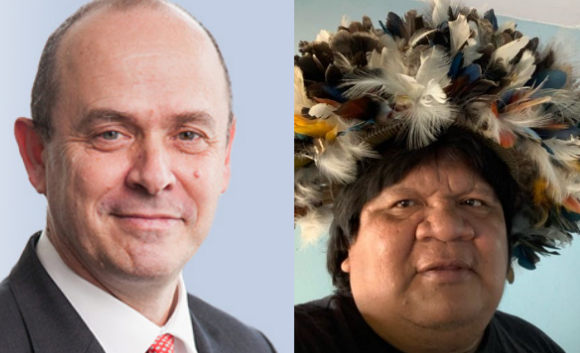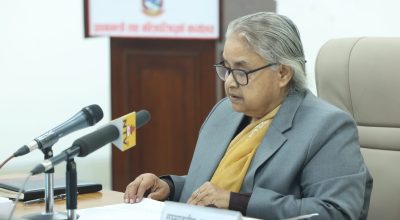
GENEVA – Humans do not just depend on nature; we are part of it. Indigenous peoples and local communities understand this and act as responsible stewards of their natural environment. If we are to succeed at mitigating and adapting to climate change, as well as halting and reversing biodiversity loss, passing a vibrant and healthy planet on to future generations, we must learn from – and support – these guardians of nature.
Conservation relies on a complex set of factors, including education and awareness, enforcement of rights and laws, effective policymaking, and finance. But it is finance – specifically, how to close the $700 billion annual biodiversity-financing gap by 2030 – that is a central focus of the United Nations Convention on Biological Diversity, taking place this week in Cali, Colombia.
Among the innovative financing mechanisms that have been attracting attention as a potential solution are biodiversity credits. While such credits come in many different forms, all are essentially a market mechanism for rewarding those who channel finance into nature conservation and restoration. At their core, they provide those that invest in nature with robust “credit” of their positive impact according to land conserved or restored that can be used to demonstrate compliance with relevant laws, improve nature’s productivity, or enhance good reputations.
If used effectively, biodiversity credits can channel financing toward nature’s stewards, improving their material conditions and reinforcing the legitimacy of their critical role in environmental stewardship. Moreover, by putting a “price on nature,” such credits may encourage businesses to take more care not to undermine biodiversity.
But there is no guarantee that biodiversity credits will meet their potential. After all, while other public-interest markets can and should work, they often do not. Consider voluntary carbon markets, which look great on paper but have sometimes failed to live up to their promise – highlighting the dangers as well as the potential of market-based solutions. If markets for biodiversity credits are to be more successful, they must be better designed, implemented robustly, and governed effectively. Indigenous peoples, who know nature’s true value, must be central to this process – not merely consulted on it.
This recognition drove the creation of the International Advisory Panel on Biodiversity Credits last year. Comprising roughly two dozen environmental, policy, and business and finance experts, as well as conservation practitioners, local community activists, and indigenous leaders (including the authors), the panel was tasked with designing a framework for biodiversity-credit markets that could credibly deliver benefits for nature, climate, and people. To this end, we have spent over a year consulting with hundreds of interested parties, studying third-party research, carrying out research of our own, and analyzing ongoing biodiversity-credit pilot programs.
Our conclusions are clear. Yes, biodiversity credits could deliver on their promise of channeling funds toward nature conservation and restoration, encouraging business to engage in nature-positive activities, and supporting the needs and interests of nature’s most effective stewards. But they will not – and could cause harm – without appropriate market design and governance. To that end, we make five recommendations, all supported by real-life use cases and practical guidance.
First, unlike carbon markets, there should be no globally traded biodiversity offsets. The scheme would limit claims to those entities that have actually invested in nature.
Second, biodiversity markets should not be mainly voluntary, as carbon markets are. Instead, government policy – at the national, regional, local, and municipal levels – should support the rapid scale-up of demand and its effective use. Measures could be compliance-based, involve tax incentives, or be tied to financing and supply-chain conditions.
Third, biodiversity credits should be bought and sold only where there is clear evidence that local people’s rights – including those laid out in the UN Declaration on the Rights of Indigenous Peoples – have been respected. Fourth, price floors need to be established, to ensure that, even at their minimum level, biodiversity credits provide nature’s stewards sufficient financing. Lastly, equitable access to markets must be assured; the adoption of more radical approaches to transparency concerning where and how money is invested and returned, together with investment in building up the capacity of nature’s stewards to negotiate the value of nature’s capital can help here.
Any and all new mechanisms for financing nature conservation and restoration, including biodiversity credits, must be introduced with caution. This means learning from past mistakes and embedding inclusivity and effective governance in their design. But it does not mean going slow: on the contrary, we must act now – before the land loses its ability to produce, the rivers dry up, and the available financial resources are no longer sufficient to repair the damage caused.
Almir Narayamoga Suruí, an environmentalist and activist, is Leader of the Paiter Suruí people from the 7 de Setembro indigenous land in the Brazilian Amazon. Simon Zadek is Co-CEO of NatureFinance.
Copyright: Project Syndicate, 2024.
www.project-syndicate.org
















